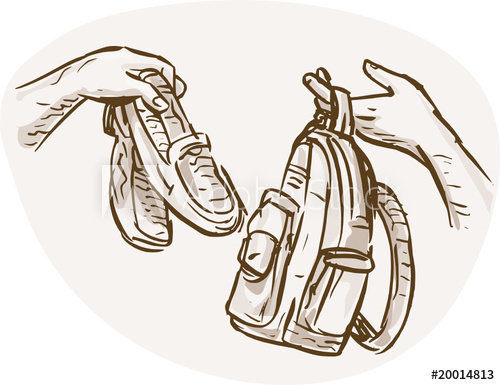Topics covered under valuation in GST
- Introduction to Valuation in GST
- Valuation for taxation
- Related party transactions
- Who are related parties?
- Non monetary Consideration
- Inclusions in the Valuation
- Exclusions from the valuation
- Valuation in case of Pure agents
- Valuation for buying and selling second hand goods
- Value of service on Air Ticket booking
- Valuation in case of Insurance business
- Conclusion
- References
1.Introduction to valuation in GST:
Valuation in GST is a very important topic to understand for a person concerned with paying taxes. Taxes may appear an extra and non important part of the business to many who are only focused on increasing sales. But to be frank keeping a tap on cost is as important as maintaining your sales. Taxes are an important part of your costing. You do not want to pay extra tax. Nor do you want to pay less which later added with interest and penalty becomes a burden for the business. Here comes the importance of understanding valuation so that you can pay correct amount of taxes.

2. Valuation for taxation:
Value for the purpose for taxation is normally the transaction value of goods and services. This is as per section 15(1) of the CGST Act, 2017.
Let us take an example. Suppose Company A sells 1 ton of iron for an amount of Rs.3000/- per ton to iron and steel Company B. Then the Company A has to pay tax on the price Rs. 3000/-to the government.
3.Related party transactions:

Now what will happen if in the above example Company A and Company B are related concerns. As Company A is related to Company B let us assume that iron was offered at a price of Rs. 2000/- per ton instead of Rs. 3000/- per ton. If we go by the earlier rule tax will be calculated on a lesser value that is Rs. 2000/-.This will be a case of under valuation. To deal with such situation section 15 specifies that in related party transaction the price at which the sale takes place is not the sole parameter to arrive at the valuation for the purpose of taxation. Valuation will be based on the Rule 28 of Central Goods and Service Tax (CGST) Rules 2017.
- Open market value for such supplies- In the above case the if the open market value for iron is Rs. 4000/- then tax is payable by Company A on Rs.4000/- irrespective of the sale price which is Rs. 2000/- in this case.
- Open market value not available – Now suppose open market value is not available. Company A may be operating in an area where no other supplier of iron is present. In this case value of supply of like kind and quality is taken as value for the purpose of calculating tax. In the example let us take another unrelated Company C who is getting iron from Company A at the rate of Rs.3000/- ton. So Rs. 3000/- may be taken as assessable value for supply.
- Valuation cannot be determined by the above methods- What if the valuation could not be computed by using the above two methods. In such cases value is determined as per Rule 30 where 110% of the cost of goods sold is calculated. Tax would be payable on such calculated amount. Suppose the cost of iron is calculated as Rs. 2000/- per ton. Then 110% of Rs.2000/- i.e. Rs.2200/- is the assessable value.
4. Who are related parties?

Related parties /persons are those persons who shares the following relationships among them
- Related persons are officers or directors of both the companies
- Such a person may be legal partners.
- Such persons are employers or employee.
- One of them is directly or indirectly in control of the other.
- One such person directly or indirectly controls or holds at least 24% voting shares or stocks.
- Both of them are controlled by a third party/ person.
- Together they directly or indirectly control a third person.
- They are members of the same family.
- Persons who are associated in the business of one another.
In the above definition persons denotes a normal person as well as a legal person. For example a company may be treated as a legal person.
5. Non monetary Consideration

It is not necessary that the transaction is always in form of money. In the above example Company A and Company B may have an agreement between them according to which Company B gives coke and labour in return of the iron purchased from Company A. Valuation becomes a bit tricky in such a case. In such a case the taxable value shall be determined as per the provisions of Rule 27 of CGST Rules, 2017 by the following method
- Open market value for such supplies- In the above case the if the open market value for iron is Rs. 4000/- then tax is payable by Company A on Rs.4000/- irrespective of the sale price which is Rs. 2000/- in this case.
- Open market value not available – Now suppose open market value is not available. Here the sum total of the consideration in money and money equivalent of the consideration received in monetary form. For example if the Company B gives Rs. 1000/- in cash and Rs. 2000/- worth coke, then the taxable value shall be Rs. 3000/- (Rs.1000/-+Rs. 2000/-)
- Value could not be determined as per 1& 2- In this situation the value of supply of like kind and quality is taken as value for the purpose of calculating tax.
- Valuation cannot be determined by the above methods- What if the valuation could not be computed by using the above two methods. In such cases value is determined as per Rule 30 where 110% of the cost of goods sold is calculated. Tax would be payable on such calculated amount. Suppose the cost of iron is calculated as Rs. 2000/- per ton. Then 110% of Rs.2000/- i.e. Rs.2200/- is the assessable value.
6. Inclusions of items in the Valuation in GST
The value for the purpose of tax shall include the following
- Any taxes, duties, cess, fees and charges levied under any Act, except GST. GST compensation cess shall be excluded from the valuation if charged separately by the supplier.
- Any amount that supplier is liable to pay which has been incurred by the recipient shall be included in the valuation. For example during the construction of the building sometimes water charges are incurred by the recipient of service. In such case the cost of procuring water for construction shall be included into the value of service.
- Any incidental expense in relation to sales like packing, commissioning, loading and unloading, etc.
- Subsidies linked to supply except Government subsidies shall be included in the value.
- Interest /late fee/ penalty for delayed payment of consideration shall be included in the value.
7. Exclusions of items from the valuation in GST
Discount can be excluded from the valuation. Only two conditions has to be fulfilled
- Such discounts are part of the agreement before the actual supply has occurred and is indicated in the invoice.
- Input tax credit as is attributable to the discounts on the basis of the invoices has been reversed by the recipient of supply
8. Valuation in GST in case of Pure agents
Who are the pure agents? GST Act has defined agents as person including a factor, broker, commission agent, argatia, del credere agent, an auctioneer or any mercantile agent who carries the receipt of goods or service on behalf of other. He is a mere facilitator for the movement of goods or provision of service between the actual provider and the recipient. To qualify as a pure agent the following conditions needs to be satisfied by the agent
- The supplier behaves like a pure agent when he makes the payment to the third party on authorization of the recipient of goods or service.
- Here the supplier indicates in his invoice the payment made by him as a pure agent on behalf of the recipient .
- The supplier has provided service for receipt of goods or service from the third party to the recipient in addition to the actual goods or service received.
- The pure agent neither intends to hold nor holds the title of goods in his own name. He has not used the goods or service for his own purpose.

Now how to do valuation in GST for such a case? Clearly as per the prescribed rules the cost of goods and service received from the third party has to be excluded to arrive at the taxable value. Suppose the agent employed to sell tissue papers from a tissue paper manufacturer to a hotel. The value of tissue paper may be Rs. 1000/- per box. In addition the agent is charging Rs. 200/-from the tissue paper manufacturer. Here the total invoice amount is Rs. 1200/- where value of goods Rs.1000/- is separately indicated in the invoice. Now as the agent does not hold any title of goods, this is box of tissue paper in this case. Rs. 200/- has to be the taxable value on which the agent has to pay tax.
9. Valuation in GST for buying and selling second hand goods

A seller sells an old item or a good as such or with minor modification. In this situation the seller does the valuation for the purpose of GST by calculating the difference between the purchase price and sale price of goods. Here the seller cannot avail the input tax credit for the purchased item. For an example a trader sells an old helmet . He has purchased the helmet at Rs.500/- but sells at Rs. 600/-. The difference between the cost price and the sale price which is basically the profit margin for the trader is the taxable value. In this case the trader pays tax on Rs. 100/- (Rs.600/- -Rs. 500/-).
A seller may repossess goods from a buyer who has defaulted. In such case he calculates a depreciation of 5% per quarter from the date of purchase and date of disposal to arrive at the taxable value.
10. Value of service on Air Ticket booking
In air ticket booking by a travel agent the taxable value is calculated on the base fare. Base fare is the amount on which the air ticket agents receive commission. Here to arrive at the value the following formula is employed
- For domestic booking – 5% of base fare.
- For international booking -10 % of base fare.

11. Valuation in GST in case of Insurance business
Insurance amount may consist of value allocated for investment and value for insurance premium. For the calculation of value, the value allocated for investment has to be excluded from the taxable value.
If the payment as a single premium annuity policy is made 10% of the amount paid by the policy holder shall be the value. In other case 25 % of the premium charged in the first year and 12.5% in subsequent years shall be the value. The above valuation rules would not apply if the entire amount is paid for covering risk of a life insurance.
12. Conclusion
The above valuation rules are comprehensive set which could be applied across any industry. It owes similarity to the older tax valuation method. Yet we could see that these are the basic rules which have been simplified in the GST regime considering the conflicts arising in the older tax regime. Nevertheless conflicts could not be ruled out completely. These issues make laws more robust wit time. Hoping this was a good educational and informative session for you I have left further links below which you may click for further reference.
13. References
- CGST Act, 2017 from CBIC website.
- Valuation articles in Taxmann.com
- Goods and Service Tax by R.K. Jain
You may like to learn about supply to have a better understanding of taxation.
You may also check topics like reverse charge mechanism and Goods and Service Tax in Construction industry. Goods ans Service tax in textile/ apparel
